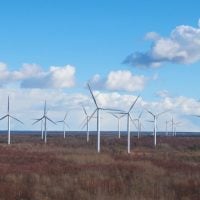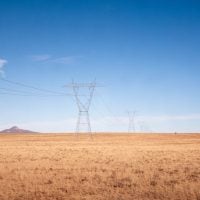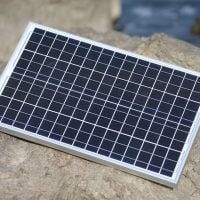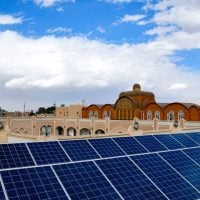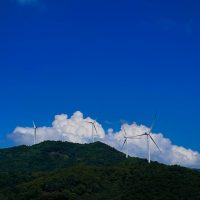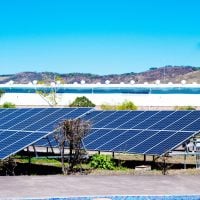The renewable energy sector is rapidly evolving, with a growing number of funding opportunities available to support innovative projects. Understanding the grant landscape is crucial for NGO professionals seeking to secure financial resources for renewable energy initiatives. This landscape is characterized by a diverse array of funding sources, including government agencies, private foundations, and international organizations.
Each of these entities has its own priorities, eligibility criteria, and application processes, making it essential for NGOs to familiarize themselves with the specific requirements of each funding source. In addition to traditional grants, there are also competitive funding programs that focus on specific technologies or geographic areas. For instance, some grants may prioritize solar energy projects in rural communities, while others might focus on wind energy initiatives in urban settings.
By understanding the nuances of the grant landscape, NGOs can better position themselves to identify and apply for funding that aligns with their mission and project goals. This foundational knowledge not only enhances the chances of securing funding but also helps organizations build strategic partnerships with funders who share their vision for a sustainable future. Are You Working on Solar Innovation or Clean Energy Access? Join us to receive updates.
Identifying Relevant Grant Opportunities
Once NGOs have a grasp of the grant landscape, the next step is to identify relevant grant opportunities that align with their renewable energy programs. This process involves thorough research and networking within the sector. Utilizing online databases such as Grants.gov, Foundation Center, and other grant search engines can provide a wealth of information about available funding.
Additionally, subscribing to newsletters from relevant organizations can keep NGOs informed about new grant announcements and deadlines. Networking is another powerful tool in identifying grant opportunities. Engaging with other NGOs, attending industry conferences, and participating in webinars can lead to valuable insights about upcoming funding opportunities.
Collaborating with partners who have successfully secured grants can also provide practical advice and guidance on navigating the application process. By leveraging both online resources and personal connections, NGOs can create a comprehensive list of potential grants that are well-suited to their renewable energy initiatives.
Researching Eligibility Requirements and Application Deadlines
After identifying potential grant opportunities, it is essential to research the eligibility requirements and application deadlines for each grant. Each funding source has specific criteria that applicants must meet, which may include organizational size, project scope, geographic location, and target populations. Understanding these requirements early in the process can save NGOs time and effort by ensuring they only pursue grants for which they are eligible.
In addition to eligibility criteria, application deadlines are critical to consider. Many grants operate on strict timelines, and missing a deadline can mean losing out on funding for an entire year or more. Creating a calendar that outlines all relevant deadlines can help NGOs stay organized and ensure timely submissions.
This proactive approach not only streamlines the application process but also allows organizations to allocate sufficient time for proposal development and review.
Creating a Comprehensive List of Potential Grants
With a clear understanding of eligibility requirements and deadlines, NGOs should create a comprehensive list of potential grants tailored to their renewable energy programs. This list should include key details such as the funding amount, application process, and specific focus areas of each grant. By organizing this information in a spreadsheet or database, NGOs can easily compare opportunities and prioritize their efforts.
In addition to traditional grants, NGOs should also consider alternative funding sources such as crowdfunding platforms or corporate sponsorships. These avenues can provide additional financial support and may have different eligibility criteria that could be advantageous for certain projects. By diversifying their funding sources and maintaining an updated list of potential grants, NGOs can enhance their chances of securing the necessary resources for their renewable energy initiatives.
Prioritizing Grant Opportunities Based on Funding Amount and Fit
Once NGOs have compiled a comprehensive list of potential grants, the next step is to prioritize these opportunities based on funding amount and fit with their organizational goals. Not all grants are created equal; some may offer substantial funding but come with stringent requirements or lengthy application processes. Conversely, smaller grants may be easier to obtain and still provide significant support for specific projects.
To effectively prioritize grant opportunities, NGOs should assess how each grant aligns with their mission and project objectives. This evaluation should consider factors such as the potential impact of the project, the alignment of the funder’s priorities with the organization’s goals, and the likelihood of success based on past experiences with similar grants. By focusing on grants that offer both substantial funding and a strong fit with their initiatives, NGOs can maximize their chances of securing financial support.
Establishing a Timeline for Grant Application Preparation
Establishing a timeline for grant application preparation is crucial for ensuring that NGOs meet all deadlines while producing high-quality proposals. This timeline should outline key milestones in the application process, including research, drafting, internal reviews, and final submission. By breaking down the application process into manageable steps, organizations can avoid last-minute rushes that often lead to errors or incomplete submissions.
In addition to outlining specific tasks, the timeline should also account for potential delays or challenges that may arise during the preparation process. For example, if an organization is collaborating with external partners or stakeholders, it is essential to build in time for feedback and revisions. By anticipating potential roadblocks and allowing for flexibility in the timeline, NGOs can enhance their ability to submit polished proposals that stand out to funders.
Organizing Application Materials and Documentation
A well-organized collection of application materials and documentation is essential for successful grant submissions. This includes not only the proposal itself but also supporting documents such as budgets, letters of support, organizational charts, and proof of nonprofit status. Having these materials readily accessible can streamline the application process and ensure that all necessary components are included in each submission.
To maintain organization, NGOs should create a centralized repository for all grant-related documents. This could be a shared drive or cloud-based storage system where team members can easily access and collaborate on materials. Additionally, establishing a checklist of required documents for each grant can help ensure that nothing is overlooked during the preparation process.
By prioritizing organization, NGOs can enhance their efficiency and effectiveness in submitting grant applications.
Developing a Strategy for Grant Proposal Writing
Developing a clear strategy for grant proposal writing is vital for crafting compelling applications that resonate with funders. This strategy should begin with a thorough understanding of the funder’s priorities and guidelines. Tailoring proposals to align with these expectations demonstrates an organization’s commitment to meeting the funder’s goals while also showcasing how their project addresses critical issues in renewable energy.
A successful proposal typically includes several key components: an engaging executive summary, a clear statement of need, detailed project objectives, a well-defined methodology, and a comprehensive budget. Each section should be written with clarity and precision while emphasizing the unique aspects of the project that set it apart from others. Additionally, incorporating real-world examples or case studies can help illustrate the potential impact of the proposed initiative.
By developing a strategic approach to proposal writing, NGOs can significantly improve their chances of securing funding.
Reviewing and Refining Grant Proposals
Once draft proposals are complete, it is essential to conduct thorough reviews and refinements before submission. This process involves seeking feedback from colleagues or external experts who can provide valuable insights into the clarity and effectiveness of the proposal. Constructive criticism can help identify areas that may need further development or clarification.
In addition to peer reviews, NGOs should also consider conducting mock reviews where team members simulate the role of funders evaluating the proposal. This exercise can help identify potential weaknesses or gaps in logic that may need addressing before submission. By investing time in reviewing and refining proposals, organizations can enhance their overall quality and increase their chances of success in securing funding.
Submitting Grant Applications and Tracking Progress
With polished proposals in hand, NGOs are ready to submit their applications. It is crucial to follow each funder’s submission guidelines meticulously to avoid disqualification due to technicalities. This includes adhering to formatting requirements, page limits, and submission methods (e.g., online portals versus email).
Ensuring that all components are included and formatted correctly demonstrates professionalism and attention to detail. After submission, tracking progress becomes essential for managing multiple applications simultaneously. Creating a tracking system—whether through spreadsheets or project management software—can help organizations monitor which proposals have been submitted, their status (e.g., under review or awarded), and any follow-up actions required.
This organized approach not only keeps teams informed but also allows them to plan future initiatives based on funding outcomes.
Evaluating and Adjusting the Grant Calendar for Future Funding Opportunities
Finally, evaluating past grant applications is crucial for continuous improvement in securing future funding opportunities. After receiving feedback from funders—whether positive or negative—NGOs should analyze what worked well in their proposals and what could be improved upon in future submissions. This reflective practice helps organizations refine their strategies over time.
Additionally, adjusting the grant calendar based on past experiences can enhance future planning efforts. For instance, if certain grants consistently yield positive results or align closely with organizational goals, NGOs may choose to prioritize those opportunities in subsequent years. By maintaining flexibility in their approach while learning from past experiences, organizations can position themselves more effectively within the ever-evolving grant landscape for renewable energy programs.
In conclusion, navigating the complex world of grants for renewable energy programs requires strategic planning, thorough research, and effective organization. By understanding the grant landscape, identifying relevant opportunities, prioritizing applications based on fit and funding amount, establishing timelines, organizing materials, developing strong proposals, tracking progress diligently, and evaluating past efforts for continuous improvement, NGO professionals can significantly enhance their chances of securing vital funding for impactful renewable energy initiatives.
When building a grant calendar for renewable energy programs, it’s essential to explore various funding opportunities that align with your project’s goals. One such opportunity is the Community Grants Program Round 2 in Australia, which offers financial support for initiatives that contribute to community development and sustainability. By incorporating this grant into your calendar, you can strategically plan your application process and increase your chances of securing funding for your renewable energy projects.







